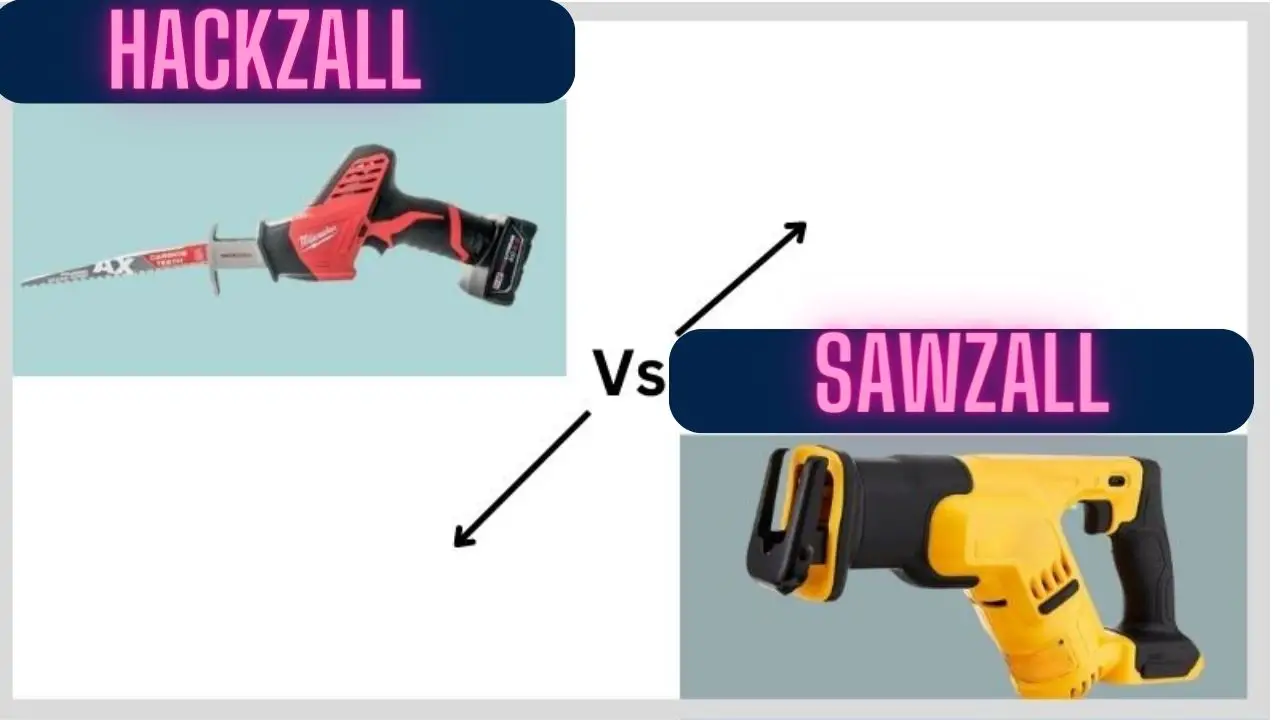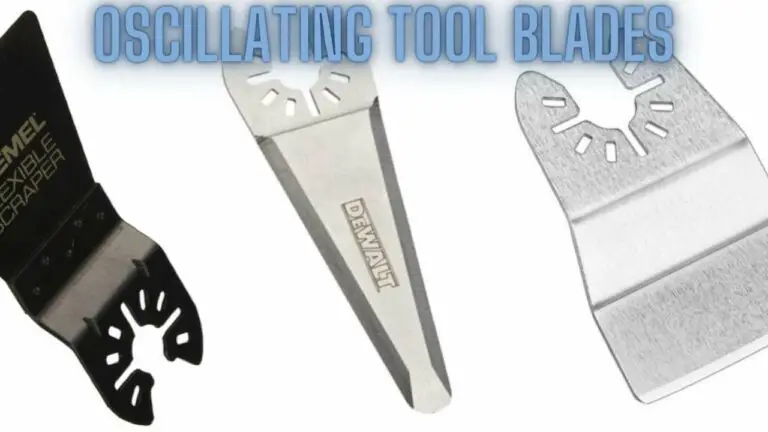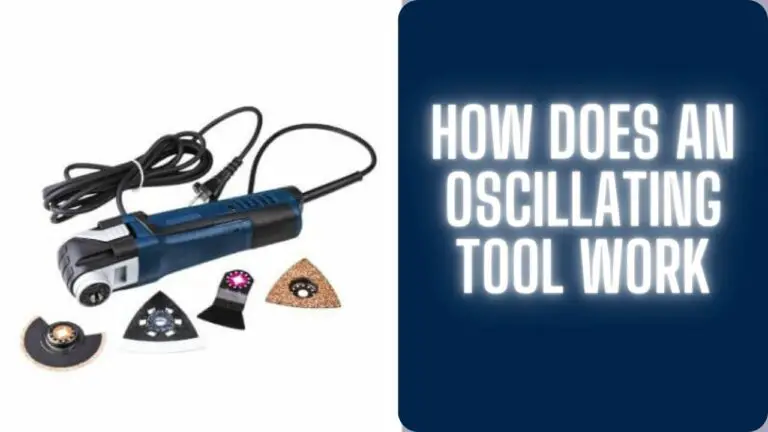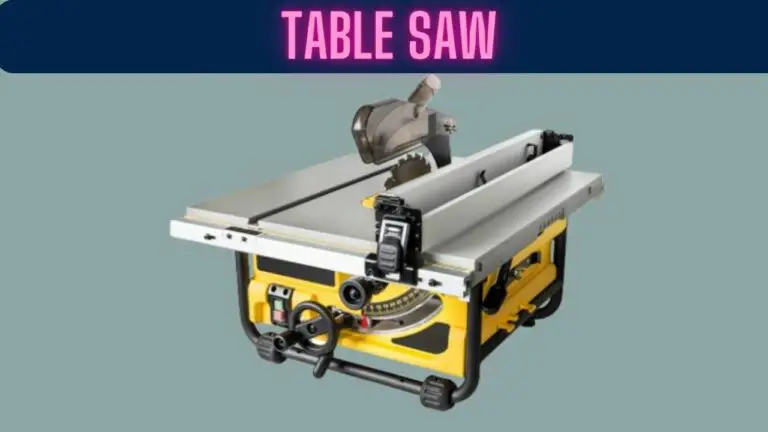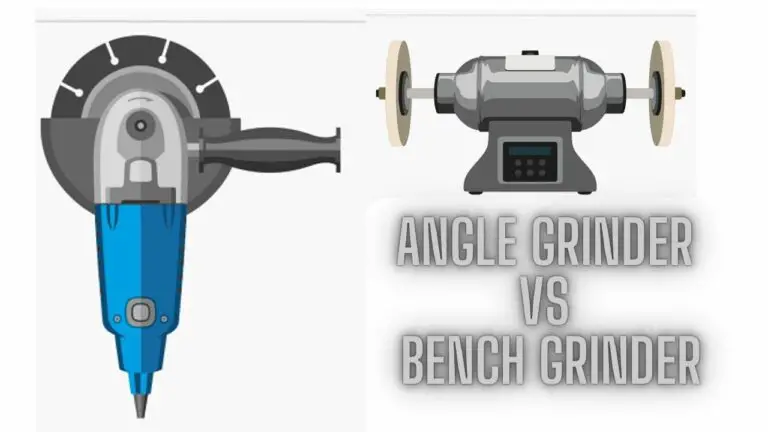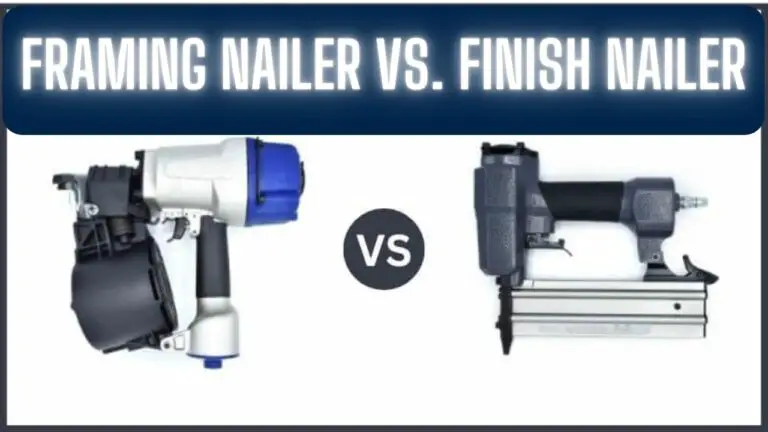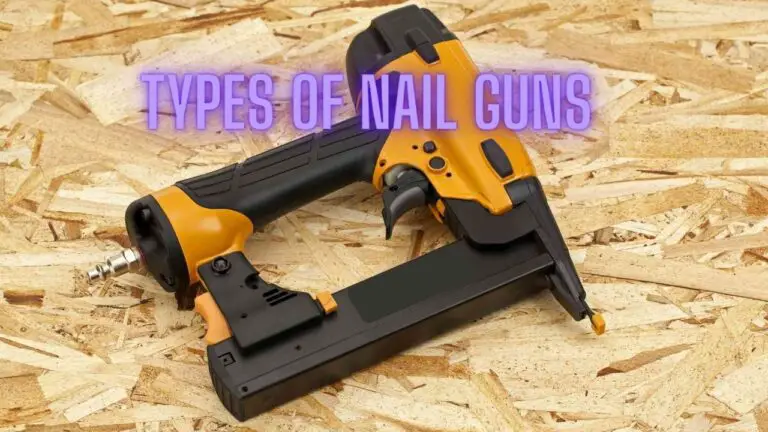Hackzall vs Sawzall: Choosing the Right Reciprocating Saw for Your Needs
Introduction
In the realm of power tools, the Hackzall and Sawzall stand as titans of cutting prowess, offering efficiency, versatility, and power for a multitude of tasks. As reciprocating saws, both tools share a common foundation – the ability to slice through various materials with a back-and-forth motion of the blade. However, within their shared domain lies a landscape of differences in design, functionality, and application, each tailored to suit distinct user needs and preferences.
This guide serves as a comprehensive exploration into the realms of the Hackzall and Sawzall, delving into their unique characteristics, strengths, and applications. By dissecting these two stalwarts of cutting innovation, we aim to equip users with the knowledge necessary to make informed decisions, whether it be selecting the ideal tool for a specific project or mastering the nuances of safe and efficient operation.
Join us as we embark on a journey through the world of reciprocating saws, where precision meets power, and where the choice between the compact agility of the Hackzall and the robust capability of the Sawzall can make all the difference in your cutting endeavors.
Understanding Hackzall
The Hackzall represents a compact and agile iteration of the reciprocating saw, designed to offer exceptional maneuverability and versatility in tight spaces and confined work areas. Here’s a deeper dive into what sets the Hackzall apart:
- Definition and Features:
- The Hackzall is a one-handed reciprocating saw, characterized by its compact size and lightweight design.
- It typically features a pistol-grip handle for easy one-handed operation, allowing users to wield it comfortably in various positions.
- Hackzalls often come with a shorter stroke length compared to larger reciprocating saws, making them ideal for precision cutting tasks and detail work.
- Advantages and Limitations:
- Advantages:
- Compact size and lightweight design make it highly portable and easy to maneuver, especially in tight or overhead spaces.
- One-handed operation provides increased control and versatility for users, allowing them to navigate obstacles and make precise cuts with ease.
- Well-suited for tasks such as plumbing, electrical work, and light demolition, where space constraints and accessibility are key considerations.
- Limitations:
- Limited power and cutting capacity compared to larger reciprocating saws, making them less suitable for heavy-duty cutting tasks or thick materials.
- Shorter stroke length may require more passes to complete cuts compared to larger saws, potentially impacting efficiency for larger projects.
- Advantages:
- Applications and Best Uses:
- Plumbing and Electrical Work: Ideal for cutting pipes, conduit, and electrical cables in confined spaces where larger saws may be cumbersome.
- HVAC and Construction: Well-suited for trimming and cutting materials such as drywall, wood, and PVC pipe during installation or renovation projects.
- DIY Projects: Perfect for hobbyists and DIY enthusiasts tackling small-scale projects, repairs, and home improvements.
In essence, the Hackzall embodies a blend of portability, versatility, and precision, making it a valuable tool for professionals and hobbyists alike seeking agile cutting solutions in compact spaces. Its unique design and features cater to a range of applications, empowering users to tackle a variety of cutting tasks with efficiency and ease.
Understanding Sawzall (Reciprocating Saw)
The Sawzall, also known simply as a reciprocating saw, is a robust and versatile cutting tool renowned for its power, durability, and capability to handle a wide range of cutting applications. Let’s delve deeper into what defines the Sawzall:
- Definition and Features:
- The Sawzall is a heavy-duty reciprocating saw characterized by its large size, sturdy construction, and powerful motor.
- It typically features a two-handed design with a D-handle or barrel grip, providing users with stability and control during operation.
- Sawzalls are equipped with longer stroke lengths compared to compact reciprocating saws, allowing for faster cutting and increased efficiency.
- Advantages and Limitations:
- Advantages:
- High Power and Cutting Capacity: The Sawzall’s robust motor and longer stroke length enable it to tackle heavy-duty cutting tasks with ease, including demolition, construction, and remodeling projects.
- Durability and Reliability: Built to withstand the rigors of professional use, Sawzalls are known for their rugged construction and long-lasting performance in demanding work environments.
- Versatility: With a wide selection of blades and accessories available, Sawzalls can cut through various materials such as wood, metal, plastic, and masonry, making them indispensable tools for contractors, plumbers, electricians, and DIY enthusiasts.
- Limitations:
- Size and Weight: The larger size and heavier weight of Sawzalls may make them less maneuverable and suitable for certain tasks in confined or overhead spaces compared to compact reciprocating saws.
- Two-Handed Operation: While providing stability and control, the two-handed design of Sawzalls may require users to use both hands during operation, limiting the ability to work in tight or awkward positions.
- Advantages:
- Applications and Best Uses:
- Demolition and Construction: Ideal for cutting through materials such as lumber, metal pipes, nails, and drywall during demolition, renovation, and construction projects.
- Plumbing and Electrical Work: Suitable for cutting through conduit, PVC pipe, and other materials encountered in plumbing, electrical, and HVAC installations.
- Landscaping and Outdoor Projects: Can be used for pruning trees, cutting branches, and trimming bushes with the appropriate pruning blade attachment.
In summary, the Sawzall epitomizes power, durability, and versatility, making it a go-to tool for professionals and enthusiasts tackling a wide range of cutting tasks. Its robust construction and high-performance capabilities equip users with the confidence and capability to tackle even the toughest cutting challenges with ease.
Differences Between Hackzall and Sawzall
While both the Hackzall and Sawzall belong to the category of reciprocating saws, they serve distinct purposes and possess unique characteristics. Here, we delve into the key differences between these two types of saws:
- Size and Design:
- Hackzall: Characterized by its compact size and one-handed operation, the Hackzall is designed for maneuverability and accessibility in tight spaces. Its smaller form factor and lightweight build make it ideal for overhead or confined-area cutting tasks.
- Sawzall: In contrast, the Sawzall typically features a larger and bulkier design, often requiring two-handed operation. It offers increased power and cutting capacity, making it suitable for heavy-duty cutting applications and tasks requiring extended use.
- Power Source:
- Hackzall: Hackzalls are commonly available in both corded and cordless (battery-powered) models. Cordless options provide greater portability and freedom of movement, while corded models offer consistent power for continuous operation.
- Sawzall: Sawzalls are also available in both corded and cordless variants. However, due to their larger size and higher power requirements, corded Sawzalls are more common for heavy-duty applications where uninterrupted power is essential.
- Cutting Capacity and Speed:
- Hackzall: Hackzalls typically have a smaller stroke length and lower cutting capacity compared to Sawzalls. While they excel at precision cutting and detail work, they may require more passes to complete cuts in thicker materials.
- Sawzall: Sawzalls boast a longer stroke length and higher cutting capacity, allowing them to tackle thicker materials and larger projects with fewer passes. They offer increased cutting speed and efficiency, making them well-suited for demanding cutting tasks.
- Maneuverability and Portability:
- Hackzall: Designed for maximum maneuverability and portability, Hackzalls are favored for tasks in confined spaces or overhead applications where mobility is paramount.
- Sawzall: While Sawzalls may be less maneuverable due to their larger size and weight, they offer superior power and versatility for a wide range of cutting tasks, making them indispensable on job sites and in workshops.
- Specialized Features:
- Hackzall: Some Hackzall models may feature specialized ergonomic designs, adjustable shoe positions, or integrated LED lights to enhance user comfort and visibility in dimly lit areas.
- Sawzall: Sawzalls may include additional features such as orbital cutting action, adjustable shoe angles, and vibration-reducing technology to optimize cutting performance and user comfort during prolonged use.
In summary, while both the Hackzall and Sawzall are reciprocating saws, they cater to different user needs and preferences. The Hackzall excels in compactness, maneuverability, and precision cutting, whereas the Sawzall offers superior power, cutting capacity, and versatility for heavy-duty applications. Understanding these differences allows users to choose the appropriate tool for their specific cutting requirements.
Similarities Between Hackzall and Sawzall
- Reciprocating Action:
- Both the Hackzall and Sawzall operate on the principle of reciprocating motion, where the blade moves back and forth to make cuts.
- This reciprocating action allows for versatile cutting capabilities, including straight cuts, curved cuts, and plunge cuts.
- Versatility:
- Both tools are versatile and can be used for a wide range of cutting tasks across various materials, including wood, metal, plastic, and more.
- They can handle tasks such as cutting pipes, trimming branches, demolishing structures, and general construction work.
- Blade Compatibility:
- Hackzall and Sawzall blades are interchangeable, allowing users to use a wide range of blade types and sizes depending on the specific cutting requirements.
- Blades are available for various materials and applications, including wood, metal, demolition, and specialized tasks like pruning.
- Safety Considerations:
- Both tools come with safety features such as blade guards, anti-kickback mechanisms, and ergonomic handles to enhance user safety during operation.
- Users are encouraged to wear appropriate personal protective equipment (PPE), including safety glasses, gloves, and hearing protection, when using either tool.
- Ease of Use:
- Both the Hackzall and Sawzall are designed with user-friendly features to facilitate ease of use and operation.
- Features such as tool-free blade changes, adjustable shoe plates, and ergonomic grips contribute to user comfort and convenience.
- Portable Options:
- While Sawzall models are primarily corded, both Hackzall and Sawzall tools are available in cordless versions, offering increased portability and freedom of movement.
- Cordless models are powered by rechargeable batteries, allowing users to work in locations where access to electrical outlets may be limited.
- Tool Accessories:
- Accessories such as carrying cases, blade storage compartments, and additional batteries are commonly available for both Hackzall and Sawzall models, enhancing their versatility and usability.
Despite their differences in size, design, and intended applications, Hackzall and Sawzall reciprocating saws share several key similarities that make them indispensable tools for cutting tasks across various industries and projects. These shared features contribute to their widespread popularity and utility among professionals and DIY enthusiasts alike.
Choosing Between Hackzall and Sawzall
Choosing between a Hackzall and a Sawzall (reciprocating saw) ultimately depends on your specific needs, preferences, and intended applications. Here are some factors to consider when making your decision:
- Scope of Work:
- Evaluate the types of projects and tasks you will be primarily using the reciprocating saw for. If you anticipate mostly smaller-scale projects with tight spaces or overhead cutting, a Hackzall might be more suitable. For larger-scale demolition, construction, or heavy-duty cutting tasks, a Sawzall might be the better choice.
- Portability vs. Power:
- Consider whether portability or power is more important for your needs. Hackzalls are more compact and lightweight, making them easier to maneuver in confined spaces and offering greater portability, especially in cordless models. Sawzalls, on the other hand, offer more power and cutting capacity, making them better suited for demanding tasks and thicker materials.
- Size and Maneuverability:
- Assess the size and maneuverability of the tool relative to the workspace and materials you’ll be working with. If you need a tool that can navigate tight spaces, corners, and awkward angles, a Hackzall’s smaller size and one-handed operation may be advantageous. However, if you have ample workspace and need the stability and control of a larger two-handed tool, a Sawzall might be more suitable.
- Cutting Capacity:
- Consider the maximum cutting capacity and stroke length of each tool relative to the materials you’ll be cutting. Hackzalls typically have a smaller cutting capacity and shorter stroke length, making them better suited for precision cutting tasks and lighter materials. Sawzalls offer a larger cutting capacity and longer stroke length, allowing for faster and more efficient cutting of thicker materials and larger workpieces.
- Budget:
- Determine your budget and compare the cost of Hackzall and Sawzall models, including any additional accessories or batteries if opting for a cordless model. Hackzalls are generally more affordable than Sawzalls, making them an attractive option for budget-conscious users or those with lighter cutting needs.
- User Preference:
- Ultimately, consider your personal preferences in terms of ergonomics, handling, and overall user experience. If possible, try out both Hackzall and Sawzall models in person to see which feels more comfortable and intuitive for you to use.
By carefully weighing these factors and considering your specific requirements, you can make an informed decision on whether a Hackzall or Sawzall is the right choice for your cutting needs. Remember to prioritize safety and choose a tool that aligns with your skill level and familiarity with power tools.
Tips for Safe and Effective Use
Here are some tips for safe and effective use of both Hackzall and Sawzall reciprocating saws:
- Read the Manual: Familiarize yourself with the manufacturer’s instructions and safety guidelines outlined in the user manual before operating the tool.
- Wear Personal Protective Equipment (PPE):
- Always wear safety glasses or goggles to protect your eyes from flying debris.
- Use hearing protection to reduce the risk of hearing damage from prolonged exposure to loud noise.
- Wear work gloves to protect your hands from cuts, abrasions, and vibrations.
- Secure Workpiece Properly:
- Ensure the workpiece is firmly secured in place using clamps or a vice to prevent movement or slippage during cutting.
- Support long or heavy workpieces with additional supports to minimize vibration and maintain stability.
- Inspect the Tool Before Use:
- Check the tool for any signs of damage, wear, or loose components before each use.
- Ensure the blade is properly installed and tightened securely in the chuck.
- Inspect the power cord (if corded) for any fraying or damage, and ensure the plug is in good condition.
- Select the Right Blade:
- Choose the appropriate blade type and size for the material and cutting task at hand.
- Use blades with the correct teeth per inch (TPI) for optimal cutting performance and efficiency.
- Ensure the blade is sharp and in good condition to prevent binding and kickback.
- Use Proper Technique:
- Hold the tool firmly with both hands and maintain a stable stance while cutting.
- Apply steady, even pressure to the tool and allow the blade to do the work without forcing it.
- Let the blade come to a complete stop before setting the tool down or making adjustments.
- Mind Your Surroundings:
- Be aware of your surroundings and ensure there is adequate clearance around the cutting area.
- Keep bystanders and pets at a safe distance from the work area to prevent accidents or injuries.
- Avoid cutting through hidden wires, pipes, or other obstacles that may be concealed within the workpiece.
- Use Caution with Kickback:
- Be mindful of the potential for kickback, especially when cutting large or heavy materials.
- Keep a firm grip on the tool and be prepared to react quickly if kickback occurs by releasing the trigger and allowing the blade to come to a stop.
- Turn Off and Unplug When Not in Use:
- Always turn off the tool and unplug it from the power source when not in use or when making adjustments.
- Store the tool in a secure location out of reach of children and unauthorized users.
- Regular Maintenance:
- Keep the tool clean and well-maintained to ensure optimal performance and longevity.
- Regularly inspect and replace worn or damaged parts, such as blades, brushes, and cords, as needed.
By following these safety tips and best practices, you can use a Hackzall or Sawzall reciprocating saw safely and effectively, minimizing the risk of accidents and ensuring successful cutting results.
Maintenance and Care
Maintaining and caring for your Hackzall or Sawzall reciprocating saw is essential to ensure its longevity, performance, and safety. Here are some maintenance and care tips:
- Regular Cleaning:
- After each use, clean the tool to remove dust, debris, and residues that may accumulate on the housing, blade, and other components.
- Use a soft brush, compressed air, or a vacuum with a brush attachment to clean hard-to-reach areas.
- Blade Maintenance:
- Inspect the blade regularly for signs of wear, damage, or dullness. Replace the blade if it’s bent, chipped, or no longer cuts efficiently.
- Clean the blade periodically to remove built-up residues and prevent rust. Use a blade cleaning solution or solvent if necessary.
- Lubrication:
- Lubricate moving parts, such as the blade guide mechanism and pivot points, to ensure smooth operation. Use a light machine oil or lubricant recommended by the manufacturer.
- Check the blade clamp or chuck for any signs of binding or stiffness. Apply lubricant if needed to facilitate smooth blade changes.
- Inspect Electrical Components:
- Regularly inspect the power cord, plug, and switch for any signs of damage, fraying, or wear. Replace any damaged or worn components immediately.
- Ensure electrical connections are secure and free of corrosion to prevent electrical hazards.
- Check Alignment:
- Periodically check the alignment of the blade and blade guide mechanism to ensure they are properly aligned. Adjust as needed to maintain accurate cutting performance.
- Storage:
- Store the reciprocating saw in a clean, dry place away from moisture, dust, and extreme temperatures.
- Use the provided carrying case or storage bag to protect the tool from damage during transportation and storage.
- Battery Care (for Cordless Models):
- If you have a cordless reciprocating saw, properly maintain and care for the rechargeable batteries.
- Follow the manufacturer’s recommendations for charging, storage, and battery maintenance to prolong battery life and performance.
- Safety Checks:
- Regularly inspect safety features such as the blade guard, trigger lock, and anti-kickback mechanism to ensure they are functioning properly.
- Test the tool’s safety features before each use to verify they are in working order and provide adequate protection.
- Professional Servicing:
- If you encounter any issues or abnormalities with the tool that you’re unable to resolve on your own, seek professional servicing from a qualified technician or authorized service center.
By following these maintenance and care tips, you can keep your Hackzall or Sawzall reciprocating saw in optimal condition, ensuring reliable performance, longevity, and safety for years to come.
Hackzall vs Sawzall FAQS
What is the main difference between Hackzall and Sawzall?
The main difference lies in their size and intended use. The Hackzall is smaller, designed for one-handed operation, and excels in precision cutting and tight spaces. The Sawzall is larger, more powerful, and suitable for heavy-duty tasks and demolition work.
Which one is more suitable for professional use?
Both the Hackzall and Sawzall have their place in professional use, but the choice depends on the nature of the work. The Sawzall is often favored by professionals due to its power and versatility for various applications, while the Hackzall is appreciated for its maneuverability and precision.
Can the Hackzall handle heavy-duty tasks?
The Hackzall is better suited for light to medium-duty tasks. While it can handle some heavier materials, it might struggle with tasks that require more power and cutting through dense materials.
Can the Sawzall be used for precision work?
While the Sawzall is known for its power and versatility, it might not be the best choice for precision work due to its larger size and two-handed operation. For accurate and intricate tasks, the Hackzall is a better option.
Are both available in corded and cordless models?
Yes, both the Hackzall and Sawzall are available in both corded and cordless models. Cordless versions provide greater mobility, while corded versions offer continuous power without the need to recharge batteries.
Which one is better for demolition work?
The Sawzall is the preferred choice for demolition work due to its power, longer stroke length, and ability to cut through a variety of materials. It’s designed to handle tough tasks encountered in demolition and renovation projects.
Is the Hackzall more portable than the Sawzall?
Yes, the Hackzall’s compact size and one-handed operation make it more portable and maneuverable, especially in tight or confined spaces.
Can the Hackzall replace a traditional handsaw for small tasks?
Yes, the Hackzall can be a versatile replacement for a traditional handsaw, offering quicker and more accurate cutting for small tasks like trimming and pruning.
Which is better for overhead work?
The Hackzall is better suited for overhead work due to its compact and one-handed design, which reduces fatigue and provides better control when working above your head.
Are there specific industries where one is more commonly used over the other?
The Sawzall is commonly used in industries such as construction, demolition, and renovation due to its power and ability to handle a wide range of materials. The Hackzall is popular among plumbers, electricians, and HVAC professionals who often work in tight spaces and require precision cutting.
Conclusion
In conclusion, the choice between the Hackzall and Sawzall boils down to your specific needs and the types of projects you’ll be tackling. The Hackzall is perfect for precision cutting and working in tight spaces, while the Sawzall offers more power and versatility for heavier tasks. Evaluating the features and considering your projects will guide you toward the reciprocating saw that aligns with your woodworking and construction goals.

